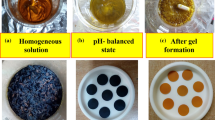Abstract
Fayalite Fe2SiO4 is synthesized by the solid-state reaction without ball milling. The obtained powder is further structurally and electrochemically examined. Field emission scanning electron microscopy (FESEM) showed that microsized powder is obtained. X-ray powder diffraction (XRD) pattern is used for both phase identification and crystal structure Rietveld refinement. The structure is refined in the orthorhombic Pbnm space group. Mössbauer spectroscopy revealed traces of Fe3+ impurity. The bond valence mapping method is applied for the first time on Fe2SiO4 framework. It shows isolated, non-connected isosurfaces of constant E(Li), which further supports the assumptions of the conversion reactions. Electrochemical performances are investigated through galvanostatic cycling, cyclic voltammetry, and electrochemical impedance spectroscopy (EIS). Ex-situ XRD and Fourier transform infrared spectroscopy (FTIR) analyses are combined to monitor phase change after galvanostatic cycling and to reveal the working mechanism during electrochemical lithiation.










Similar content being viewed by others
Data availability
The raw data required to reproduce these findings cannot be shared at this time as the data also forms part of an ongoing study.
References
M. Li, J. Lu, Z. Chen, K. Amine, 30 Years of Lithium-Ion Batteries. Adv. Mater. 30, 1–24 (2018). https://doi.org/10.1002/adma.201800561
A. Eftekhari, Low voltage anode materials for lithium-ion batteries. Energy Storage Mater. 7, 157–180 (2017). https://doi.org/10.1016/j.ensm.2017.01.009
I. Mihailova, D. Mehandjiev, Characterization of Fayalite From Copper Slags. J. Univ. Chem. Technol. Metall. 45, 317–326 (2010)
Q. Zhang, S. Ge, H. Xue, X. Wang, H. Sun, A. Li, Fabrication of a fayalite@C nanocomposite with superior lithium storage for lithium ion battery anodes. RSC Adv. 4, 58260 (2014). https://doi.org/10.1039/c4ra10206a
Q. Zhang, Y. Meng, C. Yan, L. Zhang, Synthesis of Mesoporous Fe2SiO4/C Nanocomposites and Evaluation of Their Performance as Materials for Lithium-Ion Battery Anodes. ChemistrySelect 3, 11902–11907 (2018). https://doi.org/10.1002/slct.201802265
P. Guo, C. Wang, Good lithium storage performance of Fe2SiO4 as an anode material for secondary lithium ion batteries. RSC Adv. 7, 4437 (2017). https://doi.org/10.1039/c6ra26376c
Q. Zhang, C. Yan, Q. Dai, C. Su, Facile synthesis and lithium storage properties of engineered ultrafine porous Fe2SiO4/C composites. J. Electroanal. Chem. 807, 29–36 (2017). https://doi.org/10.1016/j.jelechem.2017.11.015
D. Jugović, M. Mitrić, M. Kuzmanović, N. Cvjetićanin, S. Škapin, B. Cekić, V. Ivanovski, D. Uskoković, Preparation of LiFePO4/C composites by co-precipitation in molten stearic acid. J. Power. Sources. 196, 4613–4618 (2011). https://doi.org/10.1016/j.jpowsour.2011.01.072
F. Mueller, D. Bresser, N. Minderjahn, J. Kalhoff, S. Menne, S. Krueger, M. Winter, S. Passerini, Cobalt orthosilicate as a new electrode material for secondary lithium-ion batteries. Dalt. Trans. 43, 15013–15021 (2014). https://doi.org/10.1039/c4dt01325e
X.X. Yang, J. Qiu, Carbon-Coated Fe3O4@Fe2SiO4 Core-Shell Nanocomposites Revealing Boosted 4 5 6 Electrochemical Performance as Anode Material for LIB, Mater. Res. Express. 5, 095504 (2018).
X. Wang, L. Zhang, Y. Ma, Q. Zhang, Effect of ball-milling solvent on the structure and lithium storage performance of Fe2SiO4/C nanocomposite. Mater. Res. Innov. 00, 1–6 (2020). https://doi.org/10.1080/14328917.2020.1818463
Q. Zhang, L. Lu, S. Ge, Synthesis of Fe2SiO4@C nanocomposites via a solid state reaction by controlling calcinating temperature, in: Proc. 3rd Int. Conf. Adv. Energy Environ. Sci. 2015, 491–494 (2015). https://doi.org/10.2991/icaees-15.2015.91
H.M. Rietveld, A profile refinement method for nuclear and magnetic structures. J. Appl. Crystallogr. 2, 65–71 (1969). https://doi.org/10.1107/S0021889869006558
TOPAS, http://www.topas-academic.net/. (Accessed 1 Feb 2021).
Z. Wang, B. Peng, L. Zhang, Z. Zhao, D. Liu, N. Peng, D. Wang, Y. He, Y. Liang, H. Liu, Study on Formation Mechanism of Fayalite (Fe2SiO4) by Solid State Reaction in Sintering Process. Jom. 70, 539–546 (2018). https://doi.org/10.1007/s11837-017-2699-6
S. Akimoto, H. Fujisawa, Olivine-spinel solid solution equilibria in the system Mg2SiO4 -Fe2SiO4. J. Geophys. Res. 73, 1467–1479 (1968). https://doi.org/10.1029/jb073i004p01467
I.D. Brown, Recent developments in the methods and applications of the bond valence model. Chem. Rev. 109, 6858–6919 (2009). https://doi.org/10.1021/cr900053k
M. Sale, M. Avdeev, 3DBVSMAPPER: A program for automatically generating bond-valence sum landscapes. J. Appl. Crystallogr. 45, 1054–1056 (2012). https://doi.org/10.1107/S0021889812032906
M.D. Dyar, E.C. Sklute, O.N. Menzies, P.A. Bland, D. Lindsley, T. Glotch, M.D. Lane, M.W. Schaefer, B. Wopenka, R. Klima, J.L. Bishop, T. Hiroi, C. Pieters, J. Sunshine, Spectroscopic characteristics of synthetic olivine: An integrated multi-wavelength and multi-technique approach. Am. Mineral. 94, 883–898 (2009). https://doi.org/10.2138/am.2009.3115
X. Kan, J.M.D. Coey, Mössbauer spectra, magnetic and electrical properties of laihunite, a mixed valence iron olivine mineral, Am. Mineral. 70, 576–580 (1985). http://www.minsocam.org/ammin/AM70/AM70_576.pdf
S. Chatterjee, T. Saha-Dasgupta, First-principles simulations of structural, electronic, and magnetic properties of vacancy-bearing Fe silicates, Phys. Rev. B - Condens. Matter. Mater. Phys. 81, 1–7 (2010). https://doi.org/10.1103/PhysRevB.81.155105
A. Le Bail, Whole powder pattern decomposition methods and applications: A retrospection. Powder Diffr. 20, 316–326 (2005). https://doi.org/10.1154/1.2135315
M.T. Paques-Ledent, P. Tarte, Vibrational studies of olivine-type compounds—I. The i.r. and Raman spectra of the isotopic species of Mg2SiO4, Spectrochim. Acta Part A Mol. Spectrosc. 29, 1007–1016 (1973). https://doi.org/10.1016/0584-8539(73)80140-0
V.E. Hamilton, Thermal infrared (vibrational) spectroscopy of Mg-Fe olivines: A review and applications to determining the composition of planetary surfaces. Chem. Erde 70, 7–33 (2010). https://doi.org/10.1016/j.chemer.2009.12.005
O. Qafoku, E.S. Ilton, M.E. Bowden, L. Kovarik, X. Zhang, R.K. Kukkadapu, M.H. Engelhard, C.J. Thompson, H.T. Schaef, B.P. McGrail, K.M. Rosso, J.S. Loring, Synthesis of nanometer-sized fayalite and magnesium-iron(II) mixture olivines. J. Colloid. Interface. Sci. 515, 129–138 (2018). https://doi.org/10.1016/j.jcis.2018.01.036
Acknowledgements
This work was financially supported by the Ministry of Education, Science and Technological Development of the Republic of Serbia. D. Jugović and M. Milović acknowledge the support of the Ministry of Education, Science and Technological Development of Republic of Serbia, through agreements related to the realization and financing of scientific research work of the Institute of Technical Sciences of SASA (Contract No. 451-03-9/2021-14/200175).
Author information
Authors and Affiliations
Corresponding author
Ethics declarations
Conflict of interests
There is no potential conflict of interest relevant to this article.
Additional information
Publisher's Note
Springer Nature remains neutral with regard to jurisdictional claims in published maps and institutional affiliations.
Rights and permissions
About this article
Cite this article
Jugović, D., Milović, M., Ivanovski, V.N. et al. Microsized fayalite Fe2SiO4 as anode material: the structure, electrochemical properties and working mechanism. J Electroceram 47, 31–41 (2021). https://doi.org/10.1007/s10832-021-00260-9
Received:
Accepted:
Published:
Issue Date:
DOI: https://doi.org/10.1007/s10832-021-00260-9



